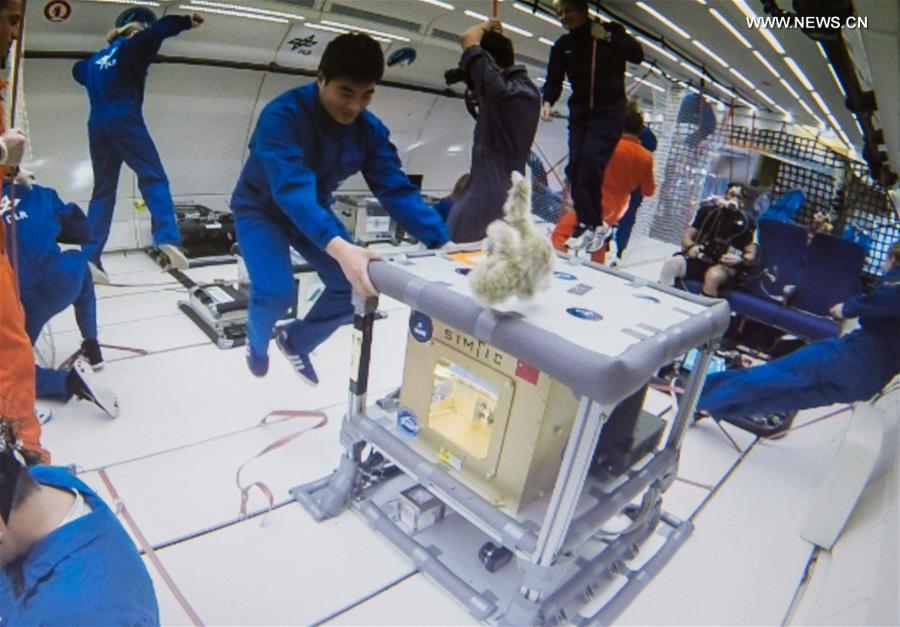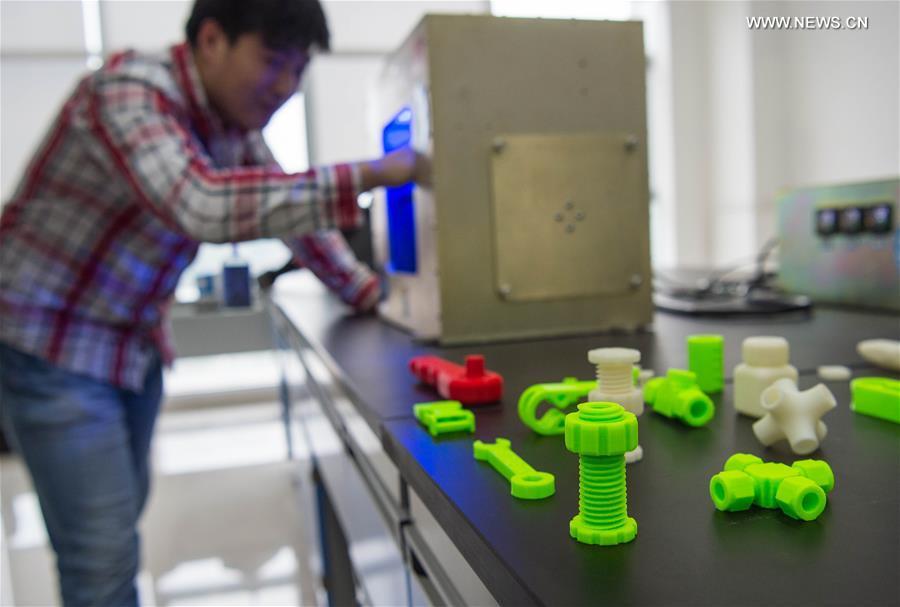 Piece by piece, more details are being revealed about China’s progress toward 3D printing in space. Last week we reported that the Chinese Academy of Sciences (CAS) recently ran several tests on a microgravity 3D printer that they had developed at the Research Center for Additive Manufacturing (3D Printing) Technology of Chongqing Institute of Green and Intelligent Technology (CIGIT). The printer underwent a total of 93 parabolic test flights, which showed that not only can the printer operate in zero gravity, but it can successfully print with five different materials and two different printing technologies.
Piece by piece, more details are being revealed about China’s progress toward 3D printing in space. Last week we reported that the Chinese Academy of Sciences (CAS) recently ran several tests on a microgravity 3D printer that they had developed at the Research Center for Additive Manufacturing (3D Printing) Technology of Chongqing Institute of Green and Intelligent Technology (CIGIT). The printer underwent a total of 93 parabolic test flights, which showed that not only can the printer operate in zero gravity, but it can successfully print with five different materials and two different printing technologies.
Now, CIGIT has released a few more details about what was printed and where they intend to go with the printer from here. CIGIT, which operates under CAS, was established in 2011, and its additive manufacturing research center has been responsible for some interesting developments in emerging fields such as nanoprinting. The zero-gravity 3D printer, however, is undoubtedly the center’s most significant accomplishment thus far.
“(The printer) has many unique functions such as the ability to upload under a variety of gravity environments, increased speed and vibration,” said Duan Xuanming, director of the Research Center for Additive Manufacturing (3D Printing) Technology. “We have made China’s first true 3D printing under microgravity a reality.”

Image taken from video inside one of the microgravity printer’s recent test flights. Yes, that is a stuffed monkey floating above the printer.
This is obviously huge news for China’s space program – particularly since China has been barred from the International Space Station since 2011. Since then, the country has been working on the construction of their own space station – an understandable response, as anyone who’s ever been excluded will agree. The development of the zero-g 3D printer is a major step forward, as it means that parts for the space station can be 3D printed both on Earth and in space, likely hastening the construction of the modular station as well as enabling its maintenance once it’s established. China’s main motivation for the building of the space printer is the same as NASA’s – to reduce their space station’s dependency on Earth for tools and supplies.
CIGIT was happy to point out that their printer is 20% larger than the most recent one launched by NASA, as well as being able to print in more materials. (Hey, if I was officially barred from the International Space Station, I’d be all “anything you can do I can do better” too.) There’s still a lot of work to be done, however, according to Yuan Jiahu, president of CIGIT:
“Especially the printing of complicated shapes with high precision and multiple materials. Only when we make breakthroughs in these areas can the printer be fully used for high-end applications in space.”
The tests showed that the 3D printer is capable of printing many of the tools and parts required to build a space station, however – the literal nuts and bolts, plus wrenches and other tools that, while they can be easily obtained on Earth, contribute to the weight and therefore cost of payloads sent into space. More critically, it’s capable of printing those tools without error while crazily tilting in zero gravity. China’s goal is for their space station to be completed in 2020, and the success of their 3D printer is an important step forward. This is amazing technology all round. What are your thoughts? Discuss in the Zero Gravity 3D Printer forum over at 3DPB.com.
[Source / Images: Xinhua Net / Xinhua/Liu Chan]Subscribe to Our Email Newsletter
Stay up-to-date on all the latest news from the 3D printing industry and receive information and offers from third party vendors.
You May Also Like
Printing Money Episode 17: Recent 3D Printing Deals, with Alex Kingsbury
Printing Money is back with Episode 17! Our host, NewCap Partners‘ Danny Piper, is joined by Alex Kingsbury for this episode, so you can prepare yourself for smart coverage laced...
Insights from Cantor Fitzgerald on AM’s Q1 2024 Landscape
A recent survey by Cantor Fitzgerald sheds light on the persistent challenges within the additive manufacturing (AM) industry in the first quarter of 2024. Based on responses from 38 industry...
3D Printing Financials: Xometry’s Scaling up and Strong Start to 2024
Xometry (Nasdaq: XMTR) kicked off 2024 with strong results, boosting its marketplace and technology to new heights. Both revenue and gross margin soared, fueled by an expanding global network of...
3D Printing Financials: Desktop Metal Targets Recovery Amid Net Losses and Revenue Downturn
Despite facing a decline in revenue and the persistent challenges of a tight economic climate, Desktop Metal (NYSE: DM) is making strides toward operational efficiency. The first quarter of 2024...


































